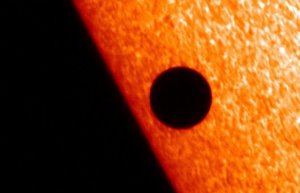New evidence suggests Saturn's moon Enceladus experiences hydrothermal activity deep within its oceans.
The findings were made using NASA's Cassini spacecraft, and could provide "unprecedented scientific possibilities," NASA reported.
"These findings add to the possibility that Enceladus, which contains a subsurface ocean and displays remarkable geologic activity, could contain environments suitable for living organisms," said John Grunsfeld astronaut and associate administrator of NASA's Science Mission Directorate in Washington. "The locations in our solar system where extreme environments occur in which life might exist may bring us closer to answering the question: are we alone in the Universe."
Hydrothermal activity on Earth occurs when seawater reacts with crust, created heat and minerals, and these new findings suggest the phenomenon could also be taking place on Saturn's icy moon. To make their findings the researchers looked at microscopic grains of rock detected by Cassini around the moon. They looked at data as well as computer simulations to show these grains most likely form when hot water teeming with dissolved minerals comes into contact with cold water.
"It's very exciting that we can use these tiny grains of rock, spewed into space by geysers, to tell us about conditions on -- and beneath -- the ocean floor of an icy moon," said the paper's lead author Sean Hsu, a postdoctoral researcher at the University of Colorado at Boulder.
The analysis found the particles were grains of silica, which can be found in Earthly sand. On Earth silica grains of this size are usually caused by hydrothermal activity occurring in alkaline and salty water. The findings suggest similar conditions exist under the waters of Enceladus' oceans.
"We methodically searched for alternate explanations for the nanosilica grains, but every new result pointed to a single, most likely origin," said co-author Frank Postberg, a Cassini CDA team scientist at Heidelberg University in Germany.
Research published in a second paper suggests hydrothermal activity is the source of methane in the plume of gas and ice particles emitted from the south pole region of Enceladus.
The researchers noted the phenomenon could be caused by methane clathrates from the ocean ebbing fragged along the plumes, causing methane bubbles to rise, but believe the presence of silica makes the hydrothermal activity theory more likely.
The first paper was published in the journal Nature and the second in a recent edition of Geophysical Research Letters.
© 2025 HNGN, All rights reserved. Do not reproduce without permission.








